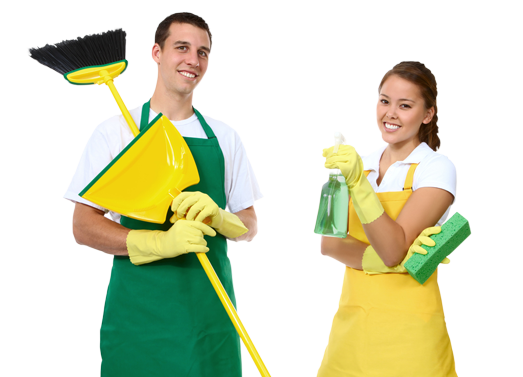Comprehensive Steps for Banishing Stubborn Stovetop Burnt Remnants
Posted on 29/06/2025
Comprehensive Steps for Banishing Stubborn Stovetop Burnt Remnants
If you love to cook, you're probably no stranger to the headache of banishing stubborn stovetop burnt remnants. Those tough, charred spots and sticky residues can feel impossible to remove, leaving your stovetop looking perpetually dirty. But don't worry! This in-depth guide will walk you through every step, tool, and trick you need to restore your stovetop's shine and cleanliness.

Understanding Stovetop Burnt Remnants
Before we dive into the cleaning process, let's understand what causes burnt-on stains. Spilled sauces, boiling-over soups, or oil splatters can calcify quickly when subjected to high heat. Over time, these burnt residues become carbonized, embedding into the surface of your stovetop and resisting ordinary cleaning methods.
Common Types of Stovetops:
- Gas stovetops: Feature metal grates and burners, which are often detachable.
- Electric coil stoves: Equipped with removable coils and drip pans.
- Glass or ceramic stoves: The smooth tops require special care to avoid scratches.
Each type may require slightly different techniques, but the ultimate goal remains the same: eliminate burnt-on gunk without damaging your appliance.
Preparation: Gather Your Cleaning Arsenal
Successful removal of stubborn stovetop burnt debris begins with proper preparation. Having the right tools and cleaning supplies at hand ensures an efficient and safe process. Here's what you'll generally need:
- Baking soda - A gentle yet effective abrasive.
- White vinegar - Cuts through grease and helps dissolve burnt bits.
- Lemon juice - Natural degreaser and deodorizer.
- Dish soap - Breaks up grime and oil.
- Non-scratch sponge or scrub pad - Avoids scratching your stovetop.
- Plastic scraper - For tackling tough, stuck-on areas.
- Microfiber cloths - For streak-free drying and polishing.
- Old toothbrush or small cleaning brush - Gets into tight corners.
Optional: For heavy-duty messes, you may also need razor blades (for glass stovetops only), cream cleansers, or store-bought stovetop degreasers. Always check your manufacturer's manual before using any abrasive tools or chemicals.
Initial Steps: Preparing the Stovetop for Deep Cleaning
Cleaning up burnt-on messes can be messy itself, so let's set the stage for a successful scrubbing session:
-
Shutdown and Cool-Off:
- Ensure the stovetop is completely turned off and cooled down. Cleaning a hot surface can be dangerous and may damage certain materials.
-
Remove Removable Parts:
- Take off burner caps, grates, or coils if possible. Soak these in the sink with hot, soapy water to loosen grease and debris while you focus on the main surface.
-
Wipe Loose Debris:
- Using a dry or lightly dampened cloth, wipe away crumbs, loose burnt bits, and food particles. This prevents scratching during deep cleaning.
The Core Cleaning Process: Step-by-Step Breakdown
1. Breaking Down the Burnt Remnants
The heart of banishing burnt-on stovetop stains lies in the right cleaning technique. Here's a step-by-step approach for different stovetop types:
For Gas & Electric Coil Stovetops
-
Create a Cleaning Paste:
- Mix equal parts baking soda and water to form a thick paste. For extra degreasing power, add a few drops of dish soap.
-
Apply Generously:
- Spread the paste liberally over burnt or stained regions. Let it sit for at least 15-20 minutes to penetrate and soften the charred material. This waiting time is crucial!
-
Scrub Using Non-Scratch Tools:
- With a non-abrasive sponge or plastic scraper, gently dislodge the softened residue. Tip: Scrub in circular motions for better lift-off.
-
Rinse & Repeat:
- Wipe clean with a damp cloth. For persistent spots, repeat the application and scrubbing process.
For Glass or Ceramic Stovetops
-
Spritz with Vinegar:
- Lightly spray the surface with white vinegar and let it fizz for a few minutes. The acidity helps break down mineral or burnt deposits.
-
Apply Baking Soda:
- Sprinkle baking soda over the affected areas. For extra power, add a few drops of lemon juice.
-
Use a Damp Microfiber Cloth:
- Lay a towel soaked in hot water over the area for 15 minutes. This helps loosen tightly stuck-on messes without scratching the surface.
-
Scrape Carefully:
- If necessary, use a razor blade (at a 45-degree angle) to gently lift burnt spots. Always apply minimal pressure and use only approved tools for glass surfaces.
-
Buff & Polish:
- Finish by buffing the surface with a dry microfiber cloth for a gleaming result.
2. Deep Cleaning Burner Grates, Coils, and Drip Pans
- Soak Grates & Coils: Place parts in a sink filled with hot, soapy water for at least 30 minutes. Add a sprinkle of baking soda for stubborn grime.
- Scrub Thoroughly: Use a stiff brush or non-scratch scrub pad to remove loosened debris.
- Rinse and Dry: Rinse each part under warm water and dry completely before reassembling to prevent rust and electrical hazards.
Special Solutions for Extra Stubborn Burnt Remnants
Sometimes, even after vigorous cleaning, persistent burnt remnants remain. If you're dealing with old, carbonized stains or baked-on sugar, try these expert-level strategies:
The Power of Boiling Water
- Pour a thin layer of boiling water directly onto the glass or ceramic stovetop (if safe per your appliance manual). Let the heat and steam soften residue before wiping clean. Never use this method on electric or gas burners.
Using Commercial Stove Cleaners
- Choose a reputable, stovetop-specific cleaner and follow the instructions closely. These often use enzymes or safe solvents geared for banishing tough burnt debris on different surfaces.
Magic Erasers and Scrubbing Pads
- A melamine foam eraser (like Magic Eraser) can help lift stubborn marks on smooth-top stoves. Test in a small spot first to confirm it won't scratch.
The Aluminum Foil Trick
- Scrunch a sheet of aluminum foil into a ball and gently rub over metal grates to remove encrusted gunk. Never use this on glass or ceramic surfaces!
Polishing and Final Touches
Once you've succeeded in banishing burnt-on remnants from your stovetop, it's important to finish with proper polishing:
-
Final Wipe-Down:
- Dampen a clean microfiber cloth with vinegar or lemon juice and wipe the entire surface. This removes lingering streaks and adds shine.
-
Buff Dry:
- Use a dry microfiber cloth for a streak-free, gleaming finish.
This step not only keeps your kitchen looking spotless, but also makes daily cleaning easier by maintaining a slick surface resistant to future grime build-up.
Preventing Future Burnt Messes
The best way to avoid tough cleaning sessions is, of course, preventive maintenance:
- Wipe up spills immediately (once cool enough to touch).
- Use stove-top covers or splatter guards during high-heat cooking.
- Deep clean regularly - set a bi-weekly schedule for best results.
- Soak removable parts overnight for effortless grime removal.
- Avoid harsh abrasives or steel wool that may create scratches and more places for dirt to cling.

FAQs on Banishing Stubborn Stovetop Burnt Remnants
What is the safest way to remove burnt-on remains from a glass stove?
Always use a baking soda-vinegar paste and non-scratch cloth. Resort to a razor blade scraper only when manufacturer-approved and only at a low angle to protect the glass surface.
Can I use oven cleaner on my stovetop?
Generally, oven cleaner is too harsh for stovetops, especially glass or induction types. Check your model's manual for recommendations and always test any new cleaner on a small, hidden area first.
How often should I deep clean my stovetop?
Banishing burnt-on remnants is much easier when you perform a deep clean every 2-4 weeks, alongside daily maintenance after cooking sessions.
Conclusion: Achieve a Spotless, Burn-Free Stovetop
With these comprehensive steps to banish stubborn stovetop burnt remnants, you can restore your appliance to like-new condition. Remember, the keys are patience, proper tools, and the right cleaning solutions. Make it a routine, and your kitchen will always shine - free from unsightly burnt-on messes! Happy cleaning!




